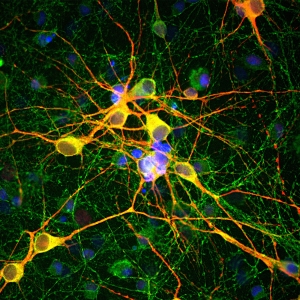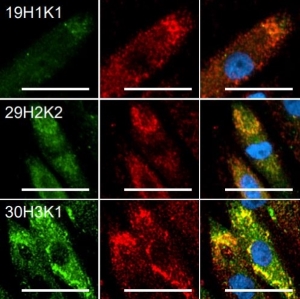The latest news from Neuromics, customers, collaborators, and friends. Here we will post publications, data, new reagents, and methods.
For additional information on Neuroscience updates check out our Neuroscience Blog.
Another Opportunity to Save on FBS
Neuromics is excited to announce another year-end promotion. This time, on our most trusted cell culture essential: Premium Imported Fetal Bovine Serum (FBS) products. These FBS products are relied on by researchers across academic, biotech, and pharmaceutical labs for their consistency, clarity, and performance.
Through the end of the year, you can take advantage of the following pricing:
- 10% off all purchases of FBS002 and FBS002-HI (through our website)
- 15% off purchases of 10 or more bottles of FBS002 and FBS002-HI (contact us for a quote)
Both the standard (FBS002) and heat-inactivated (FBS002-HI) versions are included in this promotion, giving you flexibility depending on your application needs.
Whether you’re stocking up for 2026 projects or scaling up ongoing studies, this is the perfect opportunity to save on a core reagent your lab relies on.
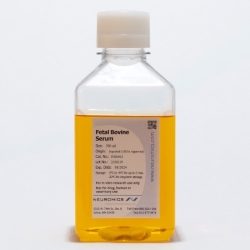
Neuromics Expands Human iPSC Portfolio
As part of our commitment to supporting innovative research, Neuromics continually seeks to introduce new human cell types that meet the needs of researchers. Earlier this month, we introduced several new cell types for studying diabetes and obesity. Now, we've turned our attention back to our selection of human iPSC-related cells, with the addition of three cell types. As a reminder, we offer a wide range of iPSC-derived neural cell types (check them out).
iPSC-derived models are transforming neuroscience research - especially for diseases like ALS, Parkinson’s, and Alzheimer’s. Models from diseased donors open the door for new assays and drug discovery approaches.
Image: Neuromics Human iPSC - Sensory Neurons (cat. IPS006) in culture.
Here are the new cell types:
- Human iPSC (cat. IPS013): a versatile cell line for custom differentiation or disease modeling.
- Human iPSC - Motor Neurons (ALS Patient, Sporadic) (cat. IPS014): derived from a patient with sporadic ALS, providing a physiologically relevant model for studying disease mechanisms
- Human iPSC - Motor Neurons (TDP-43 M337V, Homozygous) (cat. IPS015): a genetic model capturing a well-characterized ALS-linked mutation in TARDBP.
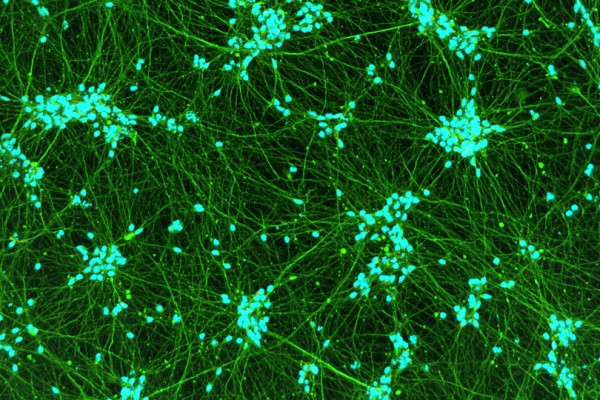
Save 5% on IBA's Premier Protein Purification Resin
As IBA Lifesciences’ U.S. distributor, Neuromics is proud to provide our customers with the most advanced tools for protein purification. Through the end of the year, you can now save 5% on IBA’s premier resin - Strep-Tactin® 4Flow® High Capacity - a trusted choice for achieving high yield and purity.
Strep-Tactin® 4Flow® High Capacity represents the latest generation of IBA’s purification technology. The resin features a low-concentration (4%) and pressure-stable agarose coupled with a high Strep-Tactin® density, resulting in:
- Exceptional protein binding capacity
- Compatibility with FPLC workstations
- High yields across all protein classes, including large and complex proteins
- Superior stability supporting at least 50 regeneration cycles
Image: The increased density of Strep-Tactin® molecules immobilized on Strep-Tactin® 4Flow® high capacity translates to an overall high binding capacity compared to Strep-Tactin® Sepharose® and Strep Tactin® Superflow® high capacity.

Neurodegenerative Disease Research Meets Our Human Cells
If you're using human cell-based assays to research neurodegenerative diseases, your work demands consistent and reliable human neural cells. Neuromics has you covered, with an impressive history of customers using our human cells to study neurodegenerative diseases.
Some examples from the past few years:
- Our primary human neurons (cat. HNC001) linked long COVID to Alzheimer's disease (AD) (check it out).
- The mechanisms connecting periodontitis and AD were explored with our 3D human blood-brain barrier model (cat. 3D45002) (learn more).
- Researchers explored how Semaphorin 4D expression leads to neurodegenerative diseases in our human brain astrocytes (cat. HMP202) (read more).
Image: Neuromics Human Brain Microvascular Endothelial Cells (cat. HEC02) stained with CD146.
Then, just last week, scientists from Imperial College in London used our primary human brain microvascular endothelial cells (HBMECs) (cat. HEC02) in an AD study.
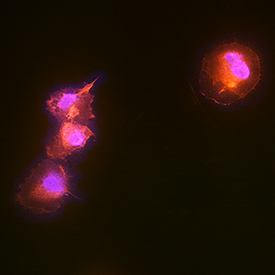
New Human Cells for Diabetes & Obesity Research
Neuromics is pleased to announce the release of five new human cell types for research in diabetes and obesity. This introduction builds on an existing inventory of human cells, specifically endothelial cells, which have a long history of being utilized to study diabetes and obesity (learn more).
Our new selection offers unique opportunities for disease-specific models, as we've chosen Adipose-Derived Stem Cells (ADSCs), fibroblasts, and hepatic stellate cells isolated from diseased donors. The cells are suited for any researcher studying type 1 diabetes, type 2 diabetes, obesity, or non-alcoholic steatohepatitis (NASH).
Image: Formation of tube networks in Neuromics HRMECs in normal glucose (NG) and high glucose (HG) conditions.
Here are the new cell types:




